Deciding between The Terminator vs Terminator 2: Judgment Day is no easy task. As a fan of James Cameron’s work (a fellow Canadian) and a long-time follower of the series, I believe both have their own unique merits. However, if I had to choose, Terminator 2: Judgment Day stands out as the superior film due to its groundbreaking special effects and dynamic action sequences.
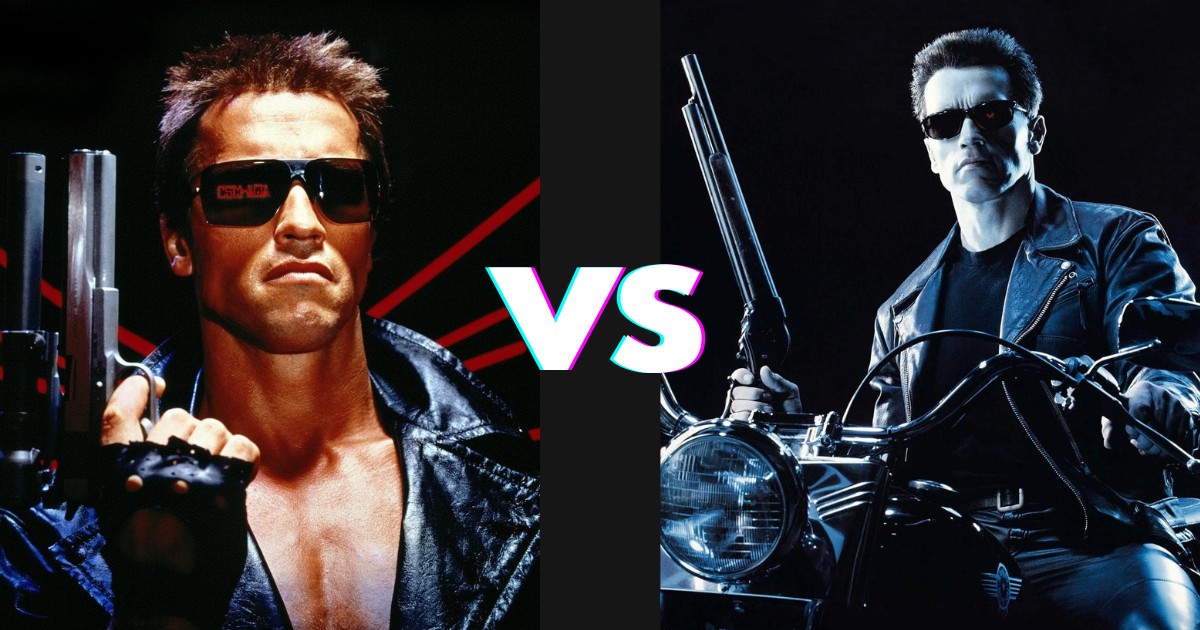
The original The Terminator introduced us to a gritty, dystopian future and the relentless T-800, played by Arnold Schwarzenegger. It’s serious tone and mature themes set a strong foundation for the franchise. Meanwhile, Terminator 2: Judgment Day took these elements and elevated them with a more polished narrative and the introduction of the formidable T-1000, a villain that remains iconic in cinema history.
Comparing the two films, The Terminator is more aligned with hard science fiction and horror, while Terminator 2 blends intense action with emotional depth, making it a definitive standout. This discussion has sparked countless debates among fans, but the advancements in CGI and the emotional arcs in Terminator 2 give it a lasting edge.
Cinematic Evolution and Innovation
In the battle between The Terminator vs Terminator 2: Judgment Day, advancements in special effects, visual style, and their influence on the sci-fi genre stand out. Each film brought significant innovation to the cinematic landscape, pushing the boundaries of what was possible at the time.
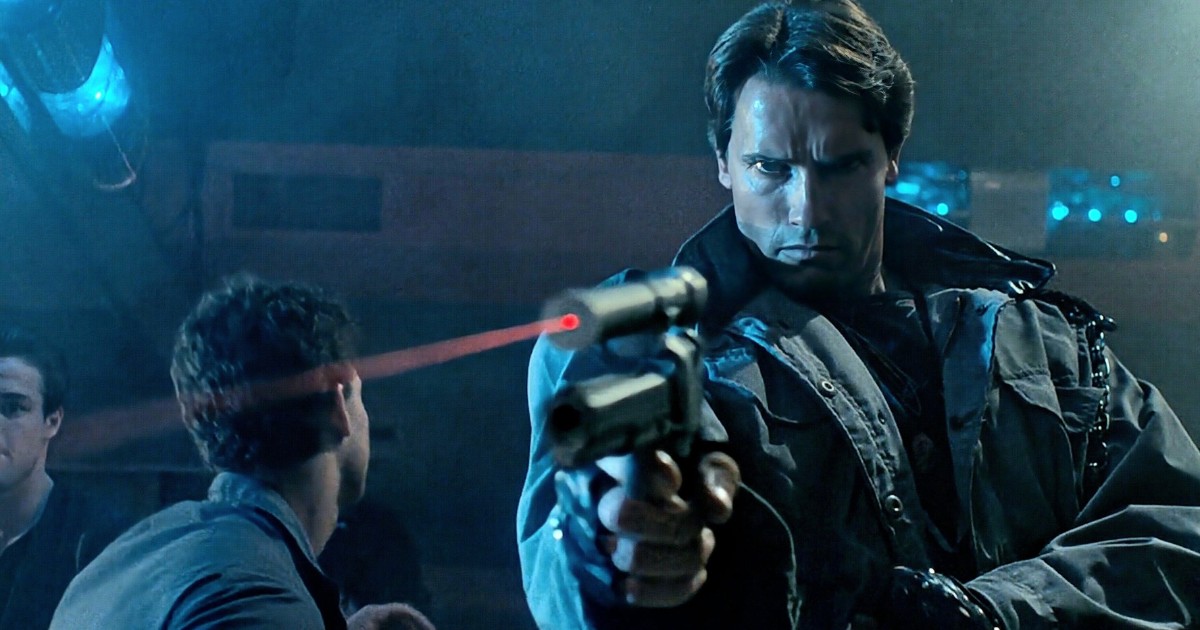
Advancements in Special Effects
Terminator 2: Judgment Day made groundbreaking strides in special effects, particularly with its use of computer-generated imagery (CGI). The film’s depiction of the liquid metal T-1000, created by Industrial Light & Magic (ILM), was revolutionary. This character showcased the first extensive use of digitally rendered characters in cinema, setting a new standard for visual effects.

In contrast, The Terminator relied more on practical effects and animatronics, which were cutting-edge for its time. Techniques such as stop-motion animation and prosthetics were used to create the menacing T-800. These practical effects were instrumental in establishing the gritty, tech-noir aesthetic of the original film.
Visual Style and Cinematography
Both films feature distinct visual styles that reflect their respective narratives and eras. The Terminator employs a tech-noir aesthetic with its somber tones, gritty textures, and shadowy cinematography. This visual style underscores the film’s darker, more suspenseful atmosphere, contributing to its enduring status as a sci-fi horror classic.
Conversely, Terminator 2: Judgment Day embraces a more polished and expansive visual approach. Its use of vibrant colors, dynamic camera movements, and large-scale action sequences significantly enhances the film’s spectacle. The second film’s cinematography evolved to include sweeping cityscapes, fast-paced chases, and dramatic lighting, contributing to its epic feel.
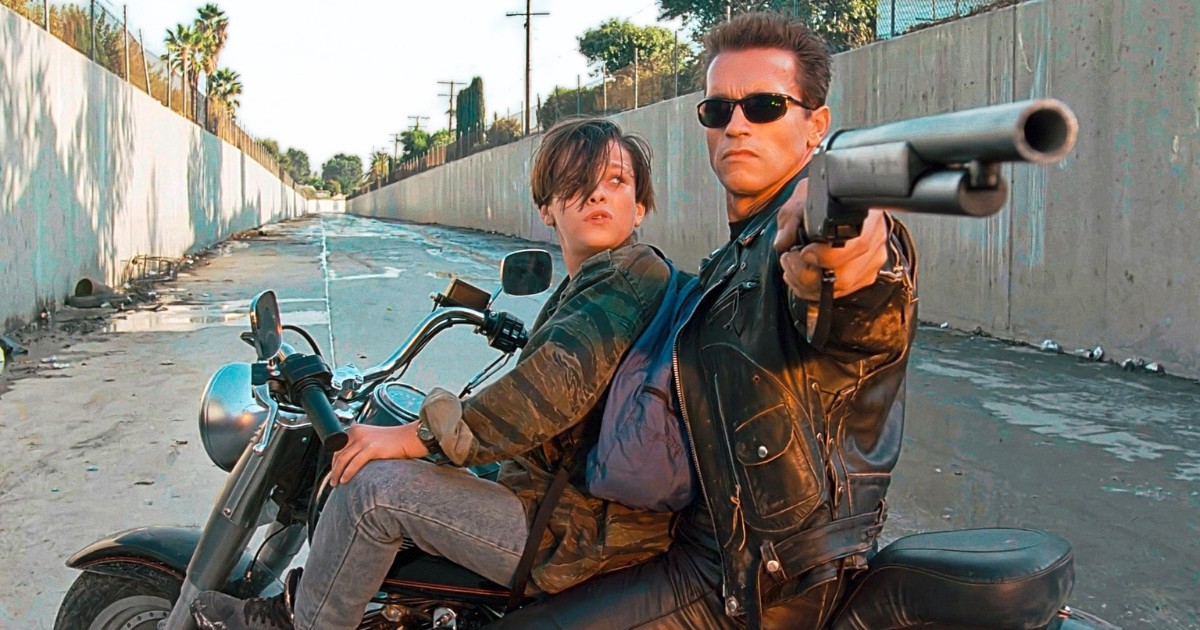
Influence on the Sci-Fi Genre
The Terminator and Terminator 2: Judgment Day profoundly influenced the sci-fi genre and the broader world of cinema. The Terminator introduced a unique blend of horror and science fiction, which was relatively novel at the time. Its impact can be seen in numerous subsequent films that explore similar themes of technology and dystopia.
Terminator 2: Judgment Day took this influence further by redefining action and sci-fi films with its cutting-edge CGI and complex narrative. The seamless integration of digital and practical effects showcased the potential of new technologies in filmmaking. This integration paved the way for future sci-fi franchises and continued the evolution of the genre well into the 21st century.
Narrative and Thematic Analysis
In examining the narratives of The Terminator and Terminator 2, I focus on their human elements and the portrayal of time travel and its consequences. Both films present unique perspectives on the interaction between humans and technology, as well as the impact of altering timelines.
Exploring the Human Element
In The Terminator, the human story centers around Sarah Connor and Kyle Reese. Reese’s journey from the future to protect Sarah introduces a love story that humanizes the broader battle against machines. His heroic efforts create personal stakes that elevate the narrative beyond a simple action plot.
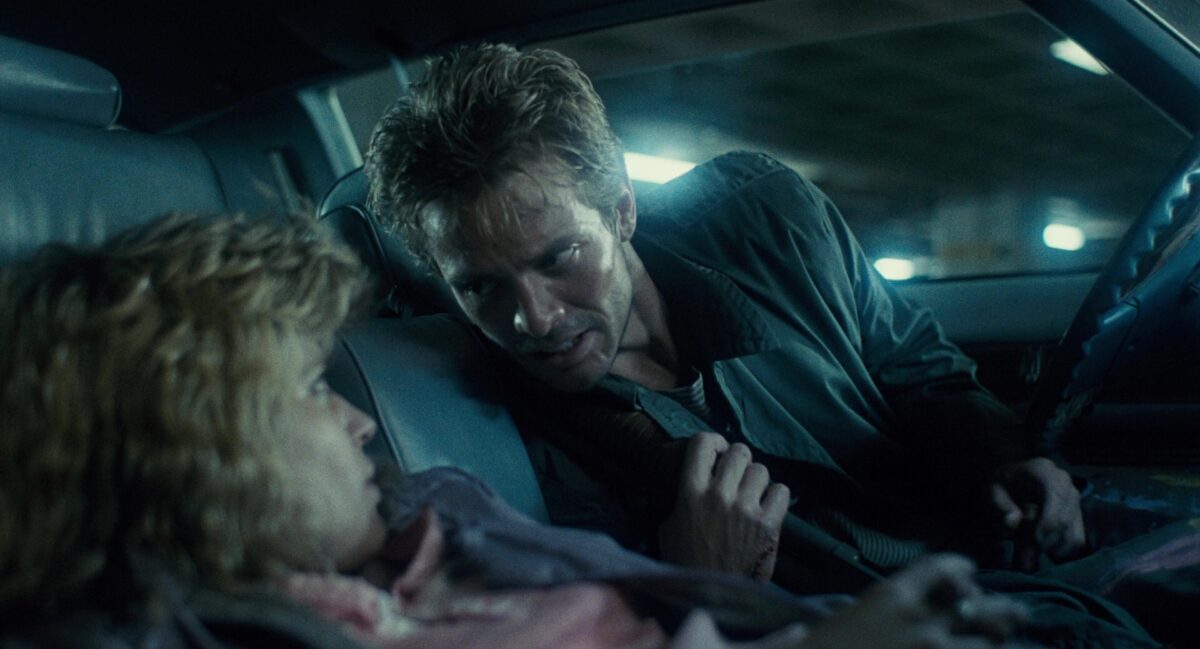
Terminator 2: Judgment Day shifts focus to John Connor and his developing relationship with the reprogrammed T-800. This dynamic explores themes of trust and redemption, as John’s influence helps transform the T-800 from a remorseless killer to a protector. Sarah’s evolution into a fierce warrior underscores the human capacity for resilience and change, making her character arc compelling.
Both films humanize their protagonists, making the stakes feel real and urgent. The presence of the T-1000 as a relentless villain contrasts sharply with the evolving heroism seen in the T-800. These elements combined highlight the fragility and strength of human connections in a high-stakes battle against technology.
Time Travel and Consequences
Time travel is a pivotal element in both movies, creating a complex narrative structure. In The Terminator, time travel introduces the idea of an endless loop—where future events influence the past and vice versa. Kyle Reese’s actions in the past are integral to John’s existence, creating a self-fulfilling prophecy.
Terminator 2: Judgment Day delves deeper into the consequences of time travel, highlighting attempts to prevent the dystopian future. John, Sarah, and the T-800’s mission to destroy Cyberdyne and prevent Skynet’s creation underscores the unpredictable ripple effects of altering timelines. Their actions symbolize a fight for control over an uncertain future.
The concept of Judgment Day serves as a looming consequence, driving characters to drastic measures. This ongoing battle against an inevitable future enhances the tension and underscores the ethical and moral questions posed by time travel. In both films, the manipulation of time raises issues about destiny, free will, and the human desire to alter fate for a better future.
Character Development and Performances
Linda Hamilton’s portrayal of Sarah Connor and Arnold Schwarzenegger’s dual role as the T-800 are pivotal in understanding the depth and evolution of their respective characters in the two films. Both films also showcase notable performances from Edward Furlong and Robert Patrick, as well as Michael Biehn’s role in the original.
The Arc of Sarah Connor
Linda Hamilton’s Sarah Connor undergoes a significant transformation between the two films. In The Terminator, she evolves from an ordinary, unassuming woman into a determined survivor. Her character is shaped by the need to protect her unborn son, John Connor, under the guidance and protection of Kyle Reese, played by Michael Biehn.
By the time of Terminator 2: Judgment Day, Sarah has transformed into a hardened warrior, driven by the mission to prevent Judgment Day. This shift highlights her increased depth and complexity as she struggles with her own fears and the burden of knowledge about the future. Hamilton’s performance is powerful, balancing Sarah’s toughness with moments of vulnerability, making her a compelling character throughout both films.
Contrasting the T-800 in Both Films
Arnold Schwarzenegger plays distinct versions of the T-800 in both movies, which offers an intriguing study in contrasts. In The Terminator, the T-800 is a relentless villain, an emotionless machine bent on eliminating Sarah Connor. His performance here is chilling and efficient, embodying the essence of an unstoppable force.
In Terminator 2: Judgment Day, Schwarzenegger’s T-800 is reprogrammed to protect John Connor, portrayed by Edward Furlong. This transition from a villain to a hero adds layers to the character. The T-800’s interactions with John introduce moments of unexpected warmth and humor, breaking away from its purely mechanical nature. This nuanced performance showcases Schwarzenegger’s ability to adapt the same character into different, yet believable roles.
Robert Patrick’s role as the T-1000 in T2 further heightens the contrast. His portrayal as a more advanced and menacing model highlights the T-800’s evolving empathy, making for a rich dynamic.
Cultural Impact and Legacy
Both The Terminator and Terminator 2: Judgement Day have left a lasting mark on the film industry and popular culture. These films, directed by James Cameron, not only set benchmarks for action and special effects but also introduced iconic characters and quotable lines that have endured for decades.
Influential Quotable Lines
Both Terminator movies are full of memorable quotes. Arnold Schwarzenegger’s line, I’ll be back, from the first film has become one of the most quotable lines in cinema history. It perfectly captures the character’s relentless nature. The line Hasta la vista, baby from Terminator 2: Judgement Day adds a touch of humor and became equally iconic.
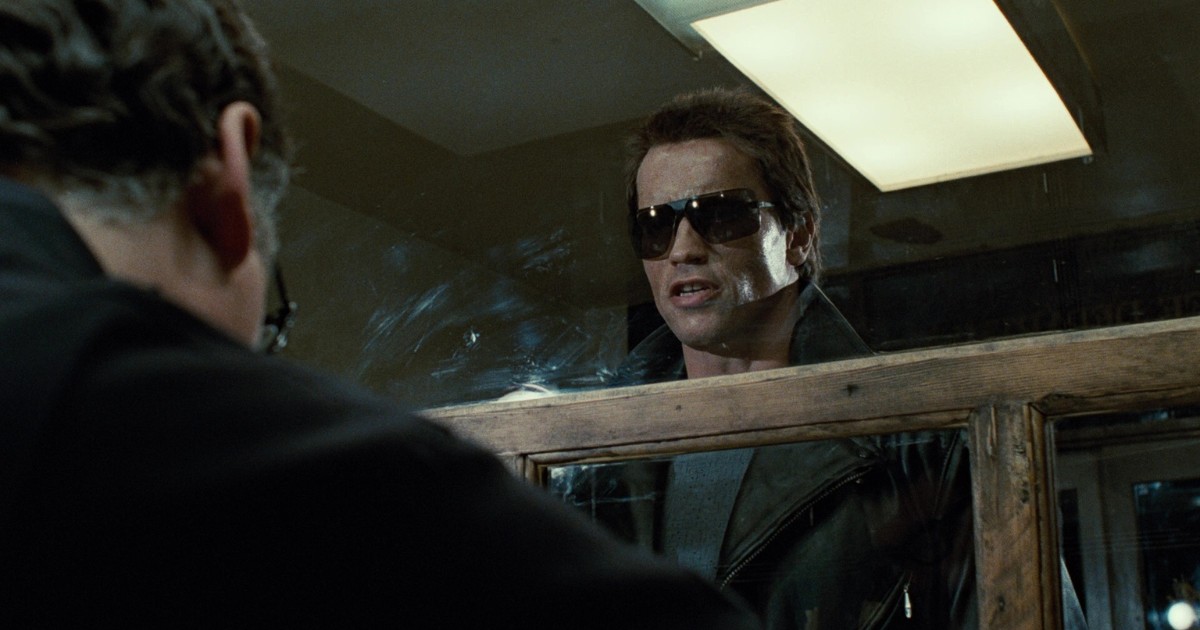
These lines have transcended the movies. They are often referenced in other media, from TV shows to everyday conversations, demonstrating their deep-rooted impact. These quotes highlight the strong writing and memorable moments crafted by Cameron and producer Gale Anne Hurd.
The Terminator Franchise Reach
The Terminator franchise has expanded far beyond films. It includes TV series like “The Sarah Connor Chronicles,” comic books, video games, and merchandise. This broad reach has cemented its status as a significant cultural phenomenon.
The franchise’s influence extends into the action and sci-fi genres as well. Many subsequent action films have borrowed elements of suspense, horror, and tension from these movies. The blend of action and horror set a new standard for genre crossovers.
Directors and filmmakers often cite the Terminator series as an inspiration. Its impact on visual effects, storytelling, and character development continues to resonate. Through its expansive reach and genre-defining elements, the Terminator franchise has created a lasting legacy in the world of entertainment.
The Terminator vs Terminator 2: Judgement Day – Which One is Better?
Jay Neill
Jay Neill is the founder, owner, and managing editor of iFILMthings and believes everyone should have access to the film resources they need to plan their filmmaking project, which is why he’s dedicated iFILMthings to helping all filmmakers.
Jay’s section on the advancements in special effects really highlights how pioneering techniques in films like ‘The Terminator’ series have pushed the envelope for what can be achieved in science fiction and beyond. It’s fascinating how these innovations have set a new standard and inspired a generation of filmmakers.
The bit about time travel and consequences got me thinking, does the article dive into how these themes have influenced other films or media? It seems like a rich area for exploration, especially considering the complex narratives we see today.
I was wondering the same! Especially since Time Travel has been a tricky subject to tackle without creating plot holes or paradoxes. It’d be cool to see how the article addresses this.
Loved your insights on Sarah Connor’s arc, Jay! It’s a brilliant example of character development done right. She really transforms from the first film to the second, and it’s a journey that’s both empowering and compelling to watch.
The comparison between the T-800 in both films was spot on! It’s amazing how the same character can evoke such different emotions in the audience, from fear to sympathy. Really shows the versatility of Arnold’s acting chops.
Absolutely agree, Marcus! Arnold’s range in these films is severely underrated. It shows how a character can totally flip the script and still remain iconic.
It’s important to note that while both ‘The Terminator’ and ‘Terminator 2: Judgement Day’ were revolutionary, they also borrowed themes from earlier works of science fiction. The article does a great job in highlighting their original contributions, but a nod to their inspirations would provide a fuller picture of their legacy.